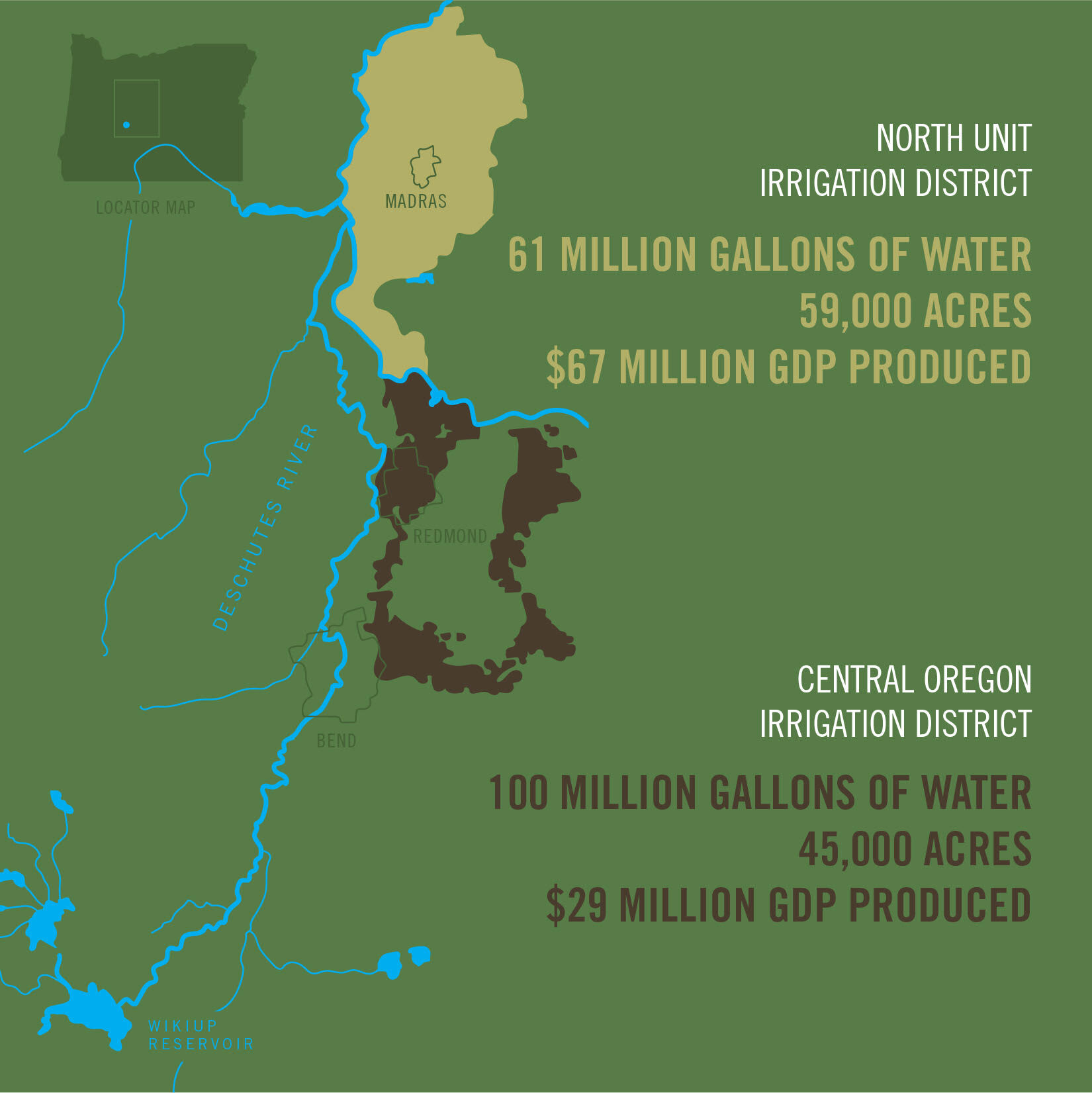Water waste runs rampant even during extreme drought
LandWatch’s Director of Rivers Conservation wrote a guest column for the Bulletin published on September 10, 2021. You can view the original article here
Guest Column: Water waste runs rampant even during extreme drought
By Tod Heisler
Graphic created by Neil Hubert
The ongoing drought remains at the forefront of our minds as summer draws to a close.
Wickiup Reservoir was drained earlier this season than ever before. We are anxious as we see the rocks emerge from the deepest parts of the river, declining populations of steelhead in warming waters and farmers’ fields going fallow as two irrigation districts have already faced water shutoffs.
Meanwhile, water waste is everywhere: water seeping into the ground, water spilling out the ends of the canals, water flooding fields and landowners being asked to use more water than they want, even under conditions of extreme drought.
Just how much water is wasted?
Most of the Deschutes Basin’s water is used for irrigation, and waste happens at every step in the process. For instance, if Central Oregon Irrigation District operated as efficiently as North Unit Irrigation District, we would save approximately 120,000 acre-feet of water in a normal year.
To put that into perspective, the water wasted could inundate the city of Bend in standing water more than five feet deep.
If you look closely, you can see the waste all around. Beginning at the river, water is diverted into leaky canals that lose as much as 50% in transmission. The water is then delivered to landowners through private laterals that are equally porous. Once in the private ditch, if a landowner fails to take his or her water, it may spill out the end of the canal. With what water remains, 1 in 4 landowners will use flood irrigation, the most wasteful method of watering.
Districts with senior rights waste water because they receive most, if not all, their water virtually every year despite drought conditions. Historically, there has been no incentive to invest in more efficient practices.
This is beginning to change with the influx of federal money and large-scale canal piping projects. These are good projects but are expensive long-term solutions. The crisis is upon us today.
As a result of this summer’s dry conditions, an age-old story of scarcity has emerged, placing blame on conservation groups for wanting to keep water flowing in the Deschutes River.
In the face of all this waste, is it fair to blame fish and wildlife?
After most of the water in the Deschutes River is diverted for irrigation, only 12% stays in the river. The artificially shallow river rises in temperature, creating lethal conditions for fish and harming wildlife.
As a first step to support Oregon spotted frog habitat, water managers release 100 cubic feet per second from Wickiup Reservoir throughout the winter. This amounts to 30,000 acre-feet of water over the year. Rather than blame fish or frogs for needing water to survive, that amount could be offset four times if Central Oregon Irrigation District eliminated its water waste.
The culprit is not the wildlife or the river itself. Neither is it the producing farmers with junior water rights struggling to stay afloat. Rather than falsely assign blame to fish or farmers, we should recognize that we are natural allies in the fight against water waste. Considering climate change and prolonged drought, we need cost-effective tools and policies to eliminate waste now.
We could start by changing policies of senior districts that place a higher priority on protecting water rights than they do conserving water. Rather than promoting lower water use during drought, senior districts ask many of their patrons to irrigate more for the sole purpose of protecting the water right.
Many solutions have been studied. Senior districts can start by promoting comprehensive water conservation policies to landowners. In addition, establishing a water bank can use financial incentives to reallocate the wasted water to farmers and the river. Isn’t it time to work together to change our water policies and eliminate wasteful practices? We all stand to benefit.
Support our Water Program
As pressures mount from climate change, inefficient and wasteful irrigation practices, and a growing population, we need water to be part of the planning process. We need to ensure our region’s rivers and springs can support healthy ecosystems and that water is distributed equitably.
That is what our Water Program aims to do.
We thank you for your support!
Infographics used in this article were created by Neil Hubert.





